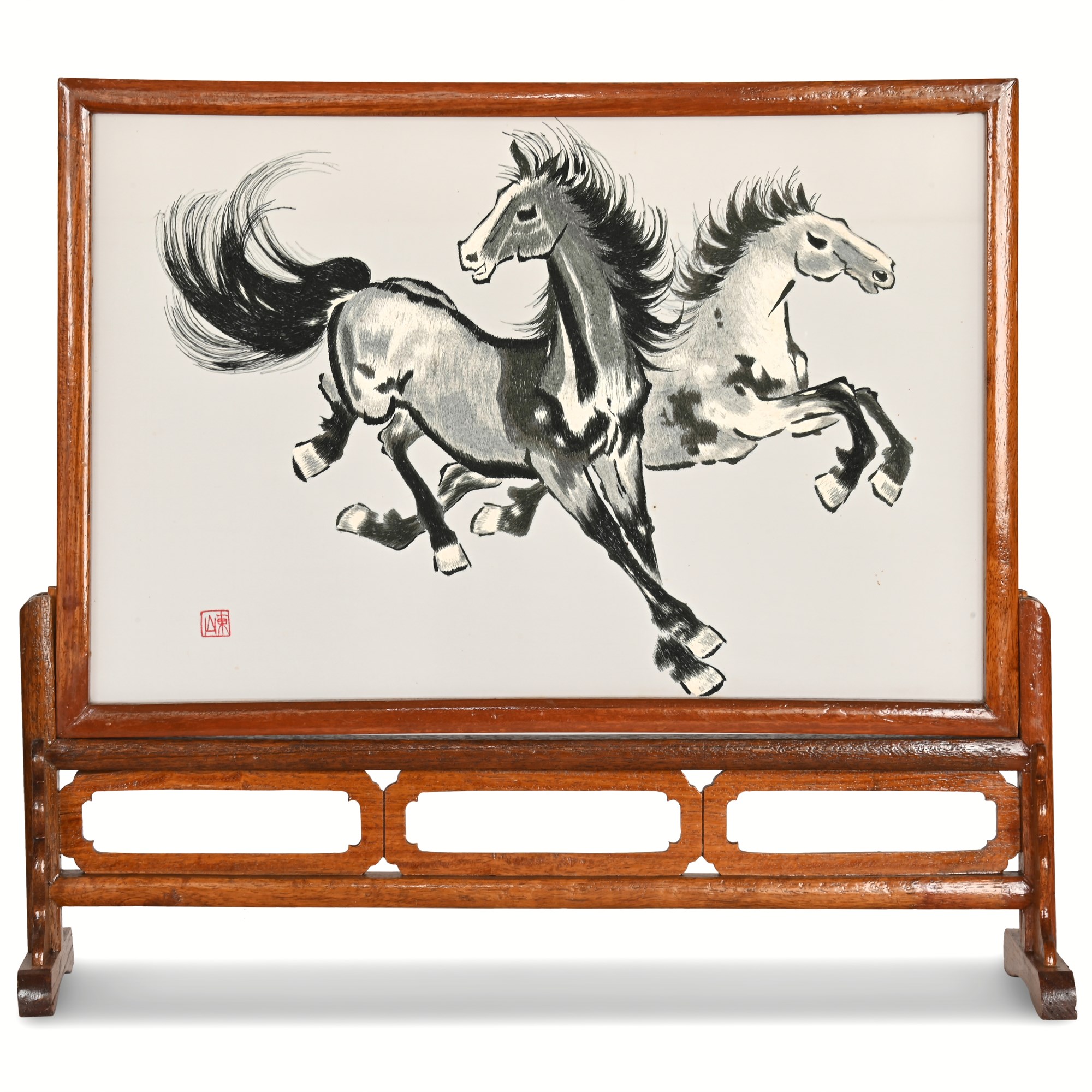Vintage Chinese Embroidered Silk Panel View Watchlist >
- Winning Bid: $170.00
- 23 Bid(s) View Bid History
- High Bidder: bzbz719575
Seller Accepts Credit Cards
Payment and pickup instructions will be available on your invoice (under "My Account") at the conclusion of this auction.
Lot # A223
System ID # 17629699
Start Date
End Date
1 Watching
Vintage Chinese Embroidered Silk Panel
A vintage silk panel featuring a masterfully embroidered scene of two galloping horses, showcasing the artist's exceptional skill in capturing the movement and grace of the animals. The piece is signed in the lower corner. The embroidery is housed in a wood frame with a matching stand, allowing for an elegant display. The panel is double-sided, enhancing its decorative appeal.
Condition:
Good, no damage noted.
Dimensions:
- Overall Size: 18" X 20" X 5"
- Visible Embroidery Size: 11 1/2" X 17 1/2"
History of Chinese Embroidery with Silk:
Chinese silk embroidery is a revered art form with a history that spans over two millennia. Originating during the Shang Dynasty (1600–1046 BC), it gained prominence through subsequent dynasties, particularly the Tang (618–907 AD) and Song (960–1279 AD) dynasties. Embroidery techniques were passed down through generations, often kept as closely guarded family secrets.
Silk, known for its luster and durability, became the primary medium for embroidery. The process of creating silk threads involves the careful extraction of fibers from silkworm cocoons, which are then spun into fine threads. These threads are dyed in a variety of vibrant colors, ready to be woven into intricate designs.
The skill required for silk embroidery is immense, demanding precision, patience, and an eye for detail. Master embroiderers spend years honing their craft, learning to manipulate the delicate silk threads to create detailed and lifelike images. Techniques such as satin stitch, seed stitch, and split stitch are commonly used, each contributing to the texture and depth of the final piece. Embroidery patterns often depict traditional Chinese themes, including landscapes, flora, fauna, and scenes from folklore, each imbued with cultural significance and symbolism.
The result of this meticulous work is a piece of art that is not only visually stunning but also a testament to the cultural heritage and artistic achievements of China. Chinese silk embroidery remains highly valued and continues to inspire admiration and appreciation worldwide.
